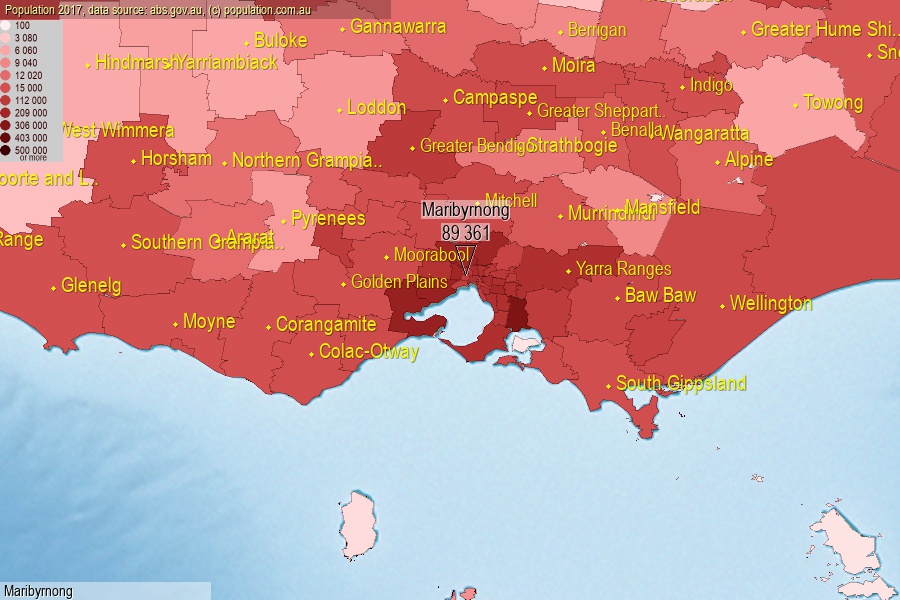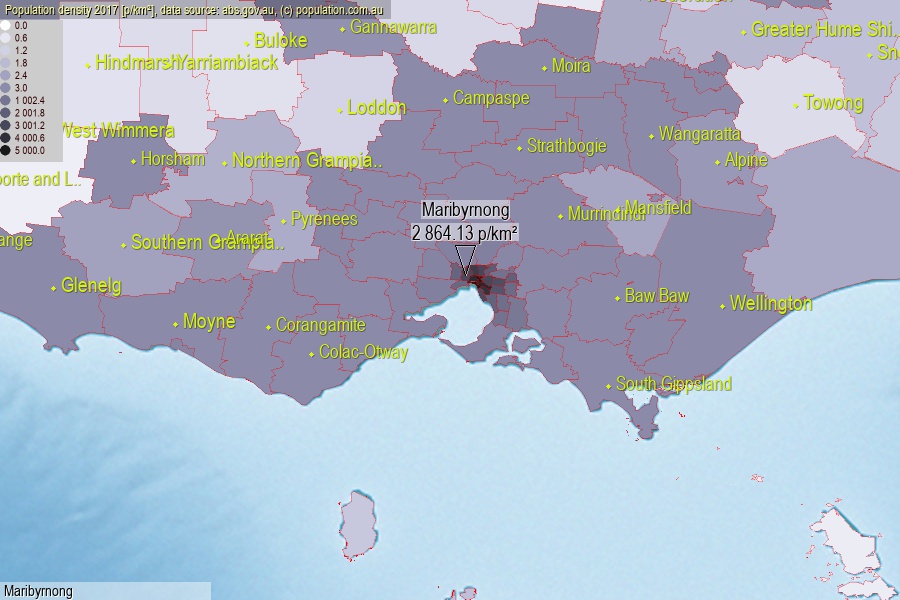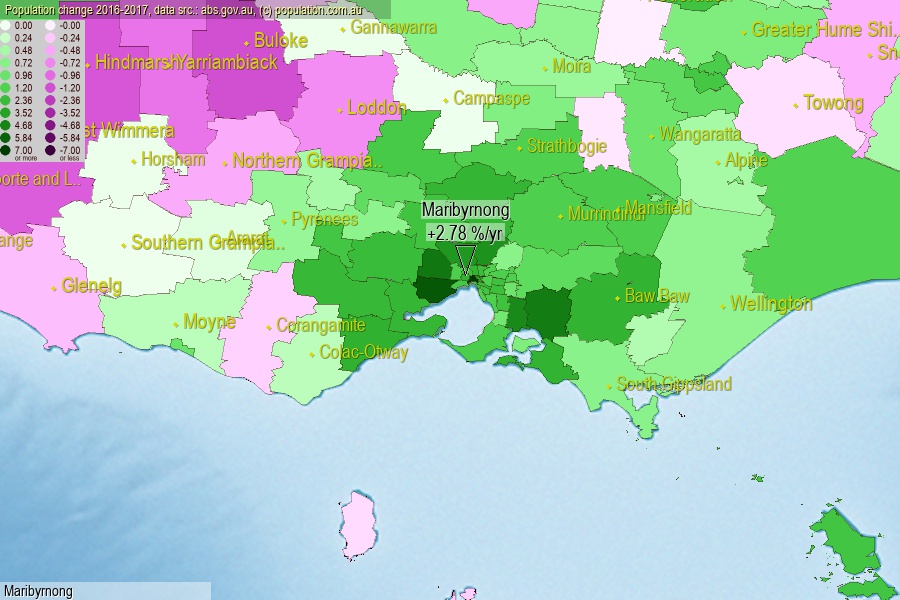 population.com.au
population.com.auLast official estimated population of Maribyrnong City (as Local Government Area) was 89 361 people (on 2017-06-30)[2]. This was 0.36% of total Australian population and 1.39% of VIC population. Area of Maribyrnong is 31.20 km², in this year population density was 2 864.13 p/km² . If population growth rate would be same as in period 2016-2017 (+2.78%/yr), Maribyrnong population in 2025 would be 111 300. [0]



Click to enlarge. Maribyrnong is located in the center of the images.
Population [people], population density [p./km²] and population change [%/year] [2]
[1996-2001] -0.16 %/Y
[2001-2002] +1.17 %/Y
[2002-2003] +1.56 %/Y
[2003-2004] +1.04 %/Y
[2004-2005] +1.53 %/Y
[2005-2006] +2.15 %/Y
[2006-2007] +3.28 %/Y
[2007-2008] +3.30 %/Y
[2008-2009] +2.82 %/Y
[2009-2010] +2.42 %/Y
[2010-2011] +2.09 %/Y
[2011-2012] +2.69 %/Y
[2012-2013] +3.37 %/Y
[2013-2014] +3.36 %/Y
[2014-2015] +2.81 %/Y
[2015-2016] +2.55 %/Y
[2016-2017] +2.78 %/Y
[0] Calculated with linear interpolation from officially estimated population
[1] Read more about LGA and Australian Statistical Geography Standard (ASGS) on abs.gov.au
[2] Population data from Australian Bureau of Statistics (Population and density: 2017; change: 2016-2017)
[3] Digital Boundaries: Australian Statistical Geography Standard (ASGS) 2016.